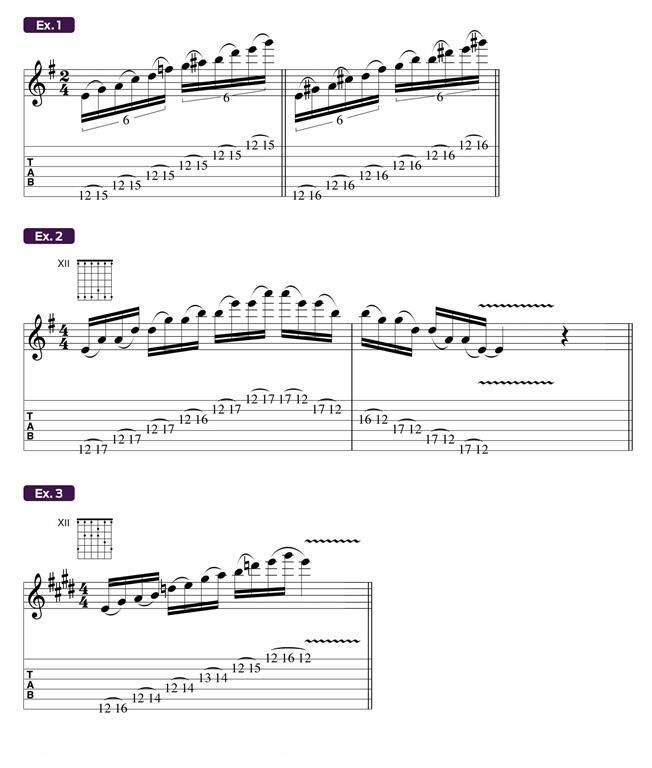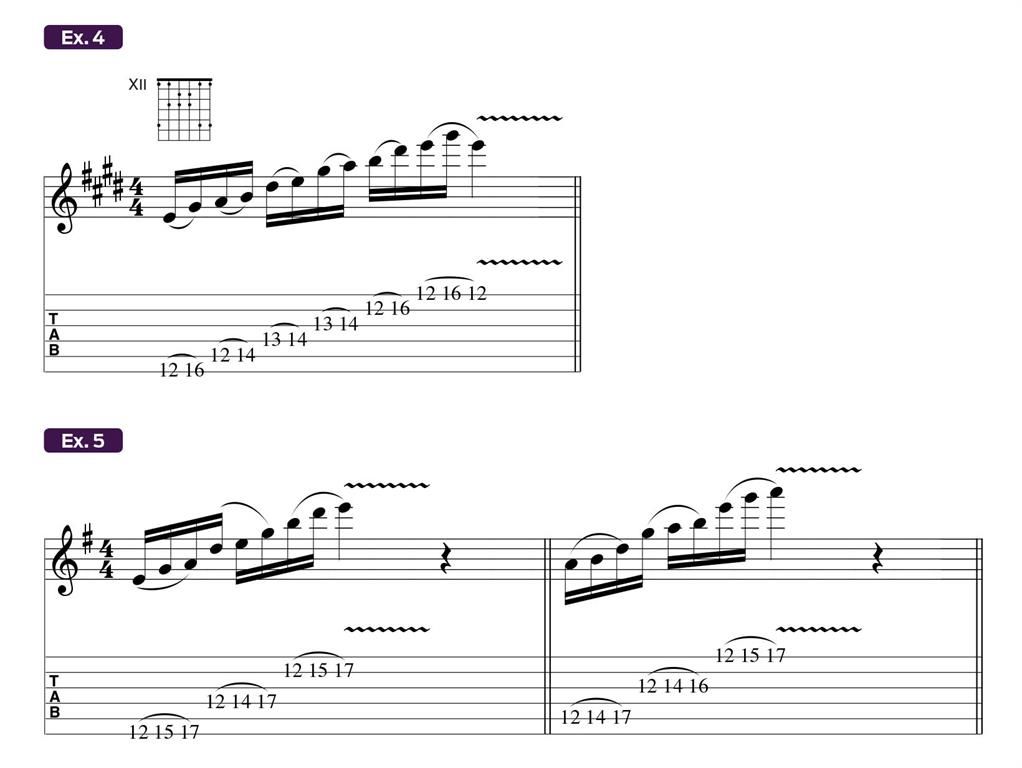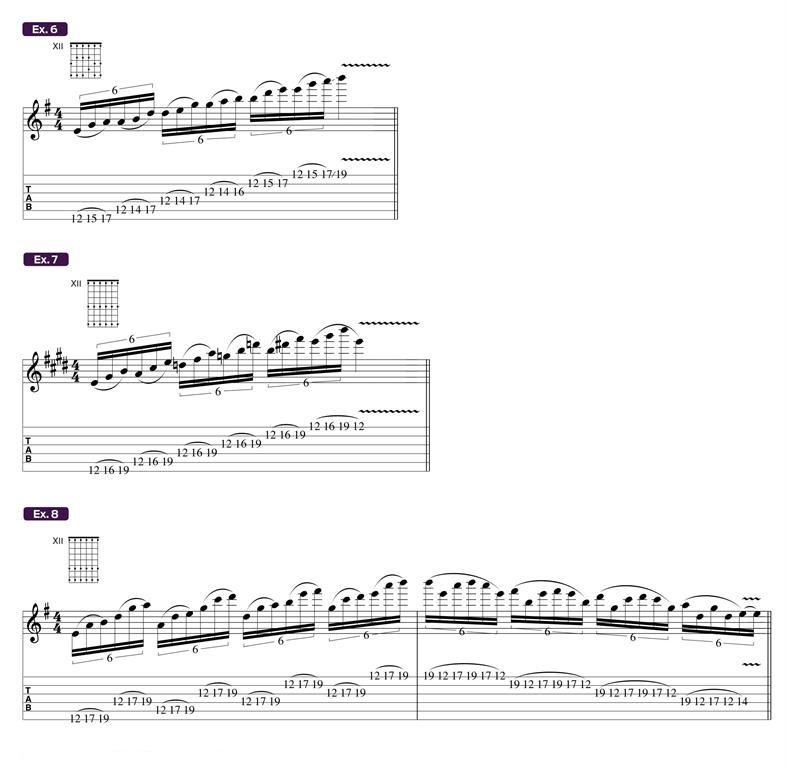Hands Like Holdsworth: Improve Your Stretch and Open Your Ears
Pick up some exercises that will strengthen your fretting-hand fingers considerably, and eventually improve your reach.

Watching Allan Holdsworth perform may leave you with the impression that you’ve encountered an advanced alien life form who communicated using the electric guitar.
His approach to music was abstract and complicated, as were his advanced melodic and atonal compositional techniques. Combine this with a seemingly endless musical imagination and an unbelievable chord vocabulary and it’s clear that Holdsworth pushed his music and technical ability into the stratosphere over the course of his 45-plus-year career.
One of the first things you’ll notice about Holdsworth’s musical prowess is his legendary fretting-hand reach, which was massive and intimidating. Holdsworth’s fingers seemed to take on the appearance of muscular tentacles as they stretch further and reach farther than you ever thought possible.
Before getting started, a word of caution: Take your time and go slowly as you work through this lesson
Very few guitarists have been able to replicate or reproduce his music, and anyone who tries faces countless performance challenges and technical hurdles. His unusual intervallic approach, coupled with a saxophone-smooth legato technique, paved the way for and inspired countless guitar legends such as Eddie Van Halen, Shawn Lane, Buckethead, Steve Vai, and Dimebag Darrell.
This lesson will reveal a series of exercises that will strengthen your fretting-hand fingers considerably, and will guide you through a series of challenges that will eventually improve your reach. Increasing how far you can stretch your fingers will immediately unlock new chord, scale, and arpeggio options, and will unlock wide-interval licks and ideas that you’ve never had access to before.
Before getting started, a word of caution: Take your time and go slowly as you work through this lesson. If you experience pain while performing any of these exercises, do not play through the pain. Stop immediately!
Improving your reach takes time, so go slowly as you progress and don’t hurt yourself! One other thing to keep in mind: Although you should strive for a clean, strong technique, a high-gain tone with plenty of compression will definitely make these licks a little easier.
Ex. 1 features two symmetrical scale shapes that will help you develop strength in your fourth finger and improve your overall reach on the fretboard.
While neither of these fit properly in an actual key, I’ve written them in the key of Em-ish to give you a point of reference. You might find the first exercise has a pentatonic scale feel, while the second one blurs major/minor tonalities and will require additional strength and agility.

Now that you’ve worked through some initial stretching exercises, continue with Ex. 2, which features an interesting unison intervallic structure and wider stretch. Thanks to the manner in which the guitar is tuned, guitarists have access to lots of unison-based ideas using a wide-interval stretch.
Unison-based ideas and licks can be found in the music of Holdsworth, but you can also hear them coming from greats such as Steve Morse, John Petrucci, Guthrie Govan, and Scott Henderson. As you work through this exercise, be sure you’re only using your index and fourth fretting-hand fingers. Go slowly, and try to fret the notes evenly with each finger as you ascend and descend through this example.
Once you feel comfortable with the first round of stretching exercises, it’s time to learn a useful hybrid-arpeggio fingering that will give you an additional challenge. Ex. 3 is a hybrid E7 arpeggio, but you’ll notice a note present from outside of the traditional spelling: A.
This added tone helps to give the arpeggio a pentatonic scale-based feel and vibe. If you like the sound of it, you can thank Jeff Beck and Jan Hammer for pioneering the use of this pentatonic arpeggio in their rock and fusion music during the 1970s.

You can expand the tonality of Ex. 3 to Emaj7, which will yield a modern and jazzy sound. Notice that the arpeggio fingering in Ex. 4 is similar to the dominant 7 version, but the 7, D, has been raised a half-step to D#, creating the hip, major 7 flavor.
The next step of building a Holdsworthian fret-hand reach would be to take two very common Em pentatonic scale shapes, combine them, and then apply a shred-approved string-skipping technique like we see in Ex. 5.
This type of wide-interval phrasing is very similar to ideas heard coming from players such as Paul Gilbert, Buckethead, and Joe Satriani. You may notice the added B note hiding in the second fingering, which was added to streamline the feel of this lick. Try the same idea as one continuous legato-shred lick in Ex. 6.

The next example [Ex. 7] features the exact symmetrical fingering Eddie Van Halen used during the opening licks of his outstanding “Ice Cream Man” solo. This three-note-per-string fingering requires an insane stretch resulting in an index finger coasting along the 12th fret, while the fourth finger dances along the 19th fret.
If this wasn’t difficult enough, you also have to include the 16th fret along the way. Take your time with this one and make sure to gradually work your way up to performing crazy stretches like this.
The final example in this lesson [Ex. 8] mutates the previous example by relocating the note we were sounding on the 16th fret and bumping it up to the 17th fret. This creates a symmetrical lick similar to those wide-interval roller-coaster licks coming from metal giants such as the late, great Dimebag Darrell, Jeff Loomis, and Buckethead.
This lesson guided you through a collection of exercises, shapes, and movements designed to help develop your ability to stretch wider on the fretboard. While I can’t guarantee you’ll achieve Allan Holdsworth’s performance level using wide-interval ideas such as these, I can guarantee you’ll gain access to new shapes, scales, chords, arpeggios, and ideas that you never thought possible.
Open your mind and you’ll open your fretboard. Good luck!
Get The Pick Newsletter
All the latest guitar news, interviews, lessons, reviews, deals and more, direct to your inbox!
“Write for five minutes a day. I mean, who can’t manage that?” Mike Stern's top five guitar tips include one simple fix to help you develop your personal guitar style
"It’s like you’re making a statement. And you never know where it’ll lead." Pete Thorn shares the tip that convinced Joe Satriani he was the right guitarist for the SatchVai Band










